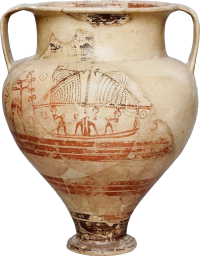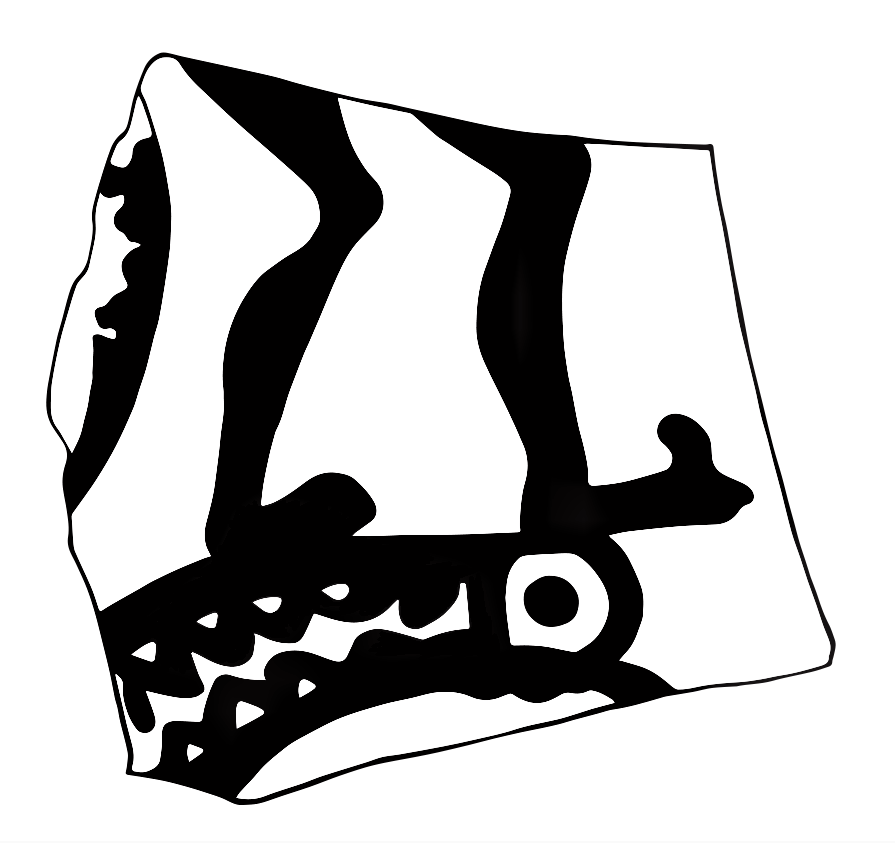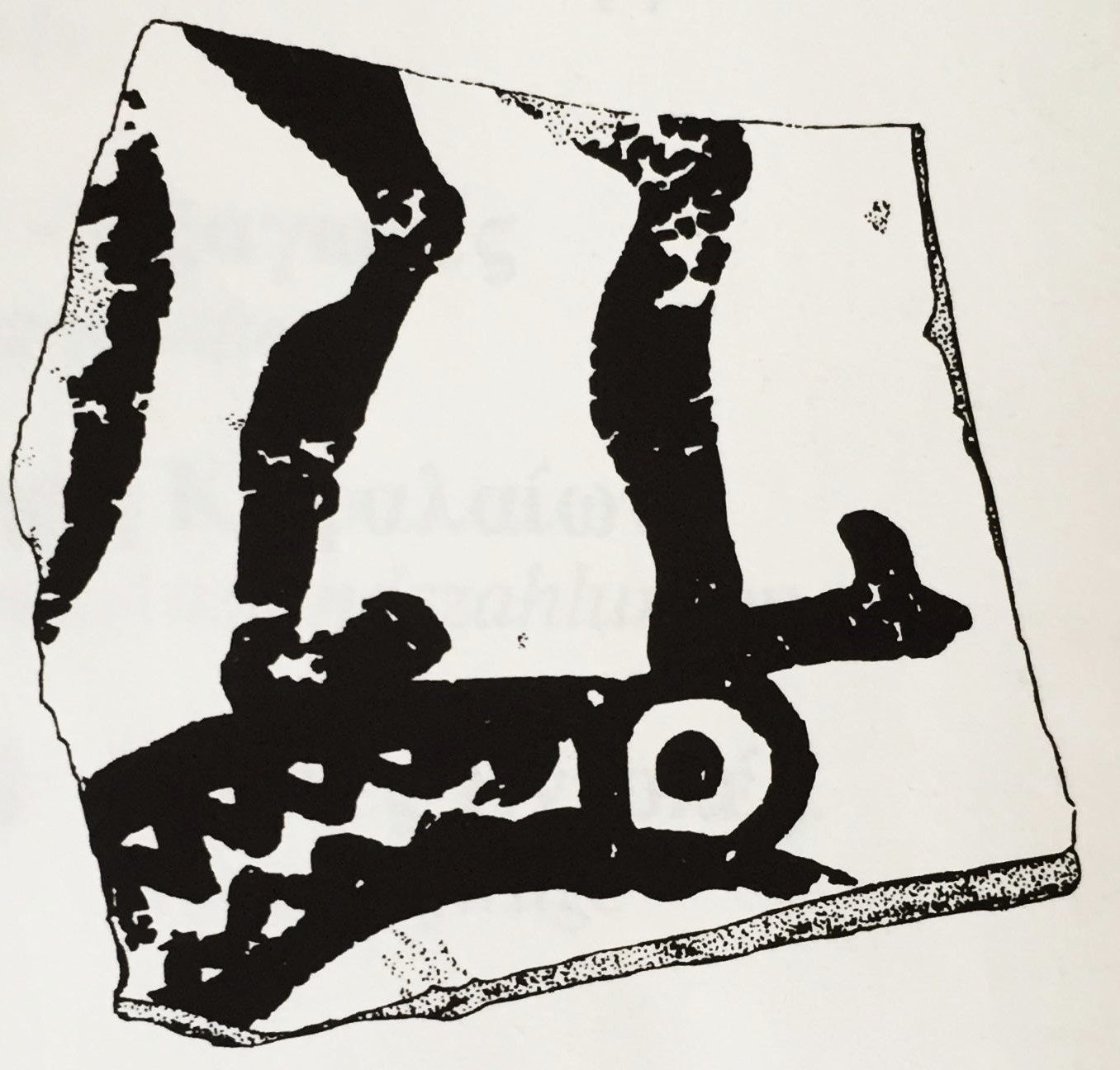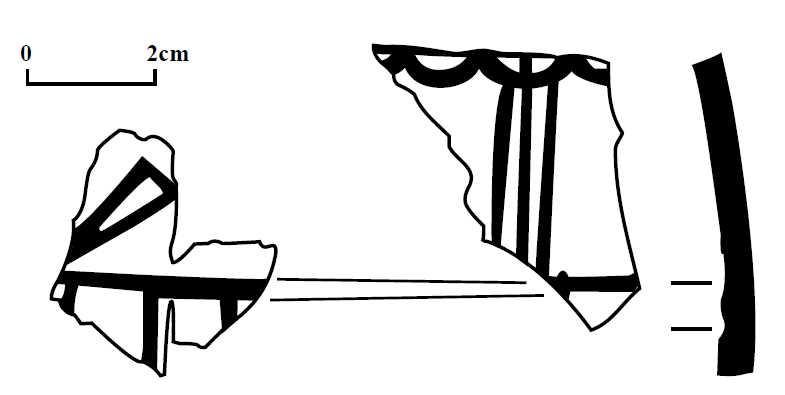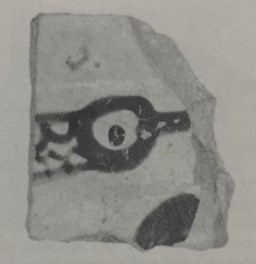Possible bird-headed ship figurehead
bird-headed figurehead
L22
LH IIIB
Ashkelon
10-36 cm diameter (estimate)
Closed large shape (based on unfinished interior and thickness). Either a large piriform jar or amphoroid krater. Buff clay and lustrous dark brown paint. Mycenae-Berbati Group (northeast Peloponnese) based on NAA.
Mountjoy 2011; Wachsmann 1998: 201; 2000; Wedde 2000: no. 6013; Yasur-Landau 2010a: 400-401, 404, fig. 5
The date and origin of this sherd have been recently entirely reassessed. Based on both NAA and its lustrous paint, it is now assigned an LH IIIB date and is confirmed as a mainland Aegean import from the northeast Peloponnese, most likely Mycenae-Berbati. The fragment possibly belongs to a large, complex battle scene similar to those depicted on the Bademgediği Tepe and Kynos craters, with warriors on deck ready to jump onto another ship depicted antithetically. There would have been room for a second ship, or alternatively it would have been depicted on a separate panel. The muscular legs of a man preserved up to thigh level are depicted standing on a bird, which has been interpreted to represent a bird-head stem ornament of a ship. The figure’s legs are slightly bent at the knees, with the heel of his left foot planted forward on top of the bird-head device, while the right foot is behind on the post. Another curving line behind the figure’s legs possibly represents either the curving profile of a shield, or less likely, the arm of a bow. This object must belong to a second warrior standing behind the first, probably positioned at a lower level and potentially part of a line of warriors.
There is a possibility that the sherd has been wrongly interpreted as depicting the figurehead of a ship given the odd placement of the warrior which finds no parallels.
Yasur-Landau remarks that the rendering of the figurehead looks completely different from the later LH IIIC representations, and instead follows the morphology of a typical bird as seen on a number of examples from Mycenae. It shows a stylized bird head, drawn by a simple circle with the eye represented by a central dot. A long recurved beak continues the curving lower line of the post. The post is filled with rows of joined semicircles. The best parallels for this decoration comes from an LH IIIB1 sherd from the Mycenaean acropolis (Sakellarakis 1992: 73, no. 132, see below) and from an LH IIIB ring-based krater from Tiryns (Güntner 2000, 90, Vogel no. 12, pl. 39.11).
Mountjoy, P.A. 2011. “A Bronze Age Ship from Ashkelon with Particular Reference to the Bronze Age Ship from Bademgediği Tepe,” AJA 115.3: 483-488.
Wachsmann, S. 1998. Seagoing Ships & Seamanship in the Bronze Age Levant. College Station, TX: Texas A&M University Press.
―――. 2000. “To the Sea of the Philistines,” in E.D. Oren (ed.) The Sea Peoples and Their World: A Reassessment. University Museum Monograph 108. Philadelphia: The University Museum, University of Pennsylvania, pp. 103–43.
Wedde, M. 2000. Towards a Hermeneutics of Aegean Bronze Age Ship Imagery. Peleus Studien zur Archäologie und Geschichte Griechenlands und Zyperns, vol. 6. Bibliopolis: Mannheim and Möhnsee.
Yasur-Landau A. 2010a: On Birds and Dragons: A Note on the Sea Peoples and Mycenaean Ships, in: Y. Cohen, A. Gilan, and J.L. Miller (ed.) Pax Hethitica: Studies on the Hittites and Their Neighbours in Honor of Itamar Singer, Wiesbaden, pp. 399–410.


